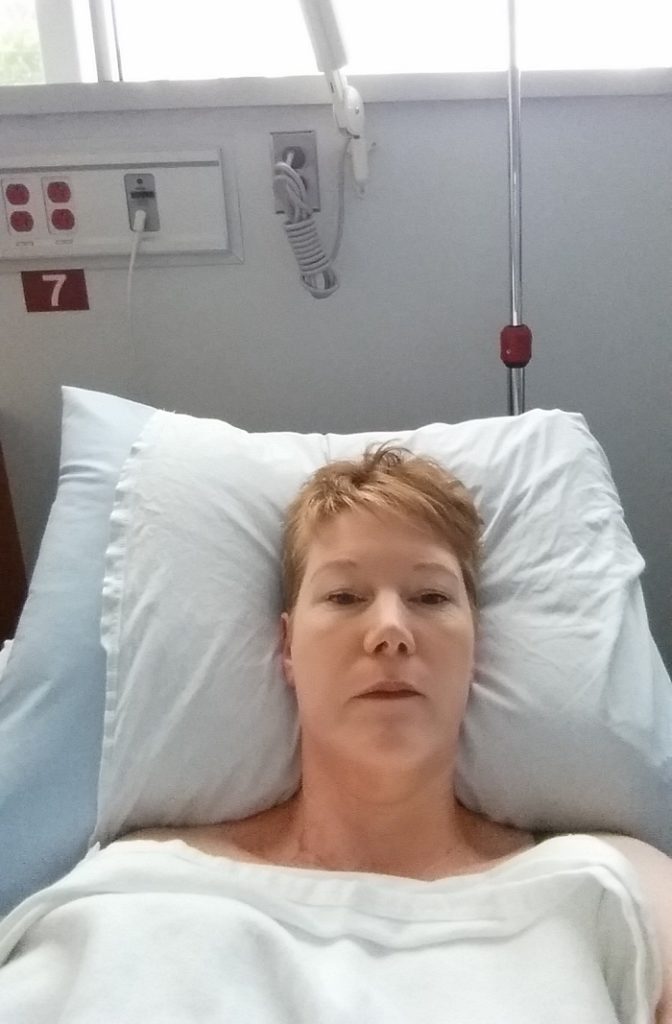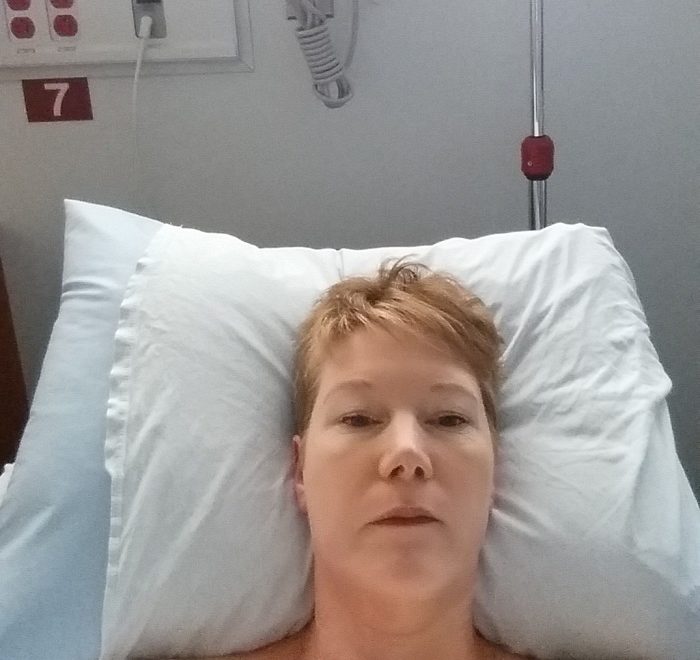On May 27th, the day of my diagnosis, I had the first of a series of 6 day-surgery procedures; all within 10 business days – or 2 weeks. These medical procedures were all performed by a specialist physician, a neuro-anesthesiologist.
I found out later, from one of the operating room (OR) nurses, that most of these procedures were done during his lunch break or before his regular working hours. And that he’d had to talk OR nurses and ultrasound technicians into treating me during their off-hours as well.
This was the same day that I’d met this neuro-anesthesiologist; because he was squeezing my last-minute consultation between his surgical cases on a Friday, he’d had me come see him in the day-surgery pre-op/post-op area of the hospital.
The previous day (May 26th), after I’d spent months trying to convince another specialist that something was wrong with my hand and arm, I’d finally gotten a second opinion. That 1-minute second opinion had provided a preliminary diagnosis, and arrangements were then immediately made for this last-minute consultation on a Friday.
I was told on Thursday that this new specialist would probably confirm the diagnosis, and then inject something into my hand to relieve the severe pain and other symptoms that I was experiencing.
So on Friday at 11:15 I met this neuro-anesthesiologist. He spent a good half hour taking my full medical history himself and examining me, and explained that my fracture had triggered a rare disease.
It’s called Complex Regional Pain Syndrome (CPRS), but he said that most physicians still use the old name Reflex Sympathetic Dystrophy (RSD) because it includes the word dystrophy. (Read my post about code-breaking for details.)
After confirming the diagnosis, this neuro-anesthesiologist became “my” neuro-anesthesiologist; my new treating physician at the same community hospital. In addition to his work at this hospital, he’s also an Assistant Professor in the Department of Anesthesia at McGill University. It was the first Department of Anesthesia in Canada (1), and now covers 5 teaching hospitals, along with 4 affiliated hospitals, and has an impressive clinical staff of 74.
I’m very luck to live near a large city, where there’s not only one university faculty of medicine – and all of its associated teaching hospitals – but two of them; McGill University, and the French-language Université de Montréal.
My neuro-anesthesiologist explained that this neuro-inflammatory disease was spreading up my arm, and that our first priority had to be to stop its spread. The CRPS had started in my fingertips, and by the time we met it had already spread to above my wrist. The disease spreads along the sympathetic nerves, so could travel all the way up my arm, and then ‘jump’; to the other arm, to either of my legs, or even to all of my other limbs.
He told me that there was a 3-month treatment ‘window’ for the best chance of stopping the spread of this disease. The fracture that triggered my CRPS was on March 3rd, but the symptoms had started on March 10th, so we calculated that this 3-month period would end on June 9th.

Whatever we opted to do, to try to stop this disease in its tracks, we had to do it before June 9th. And it was already May 27th. He outlined the possible treatment options and their risks, and we agreed – as partners in my medical care – to a fairly aggressive treatment plan.
We agreed to a series of 6 ‘stellate ganglion nerve blocks’ (also called a ‘stellate block’ or ‘cervicothoracic sympathetic block’), every 2nd weekday, starting that very day:
- Friday, May 27
- Monday, May 30
- Wednesday, June 1
- Friday, June 3
- Monday, June 6
- Wednesday, June 8
A stellate block is an injection deep into the neck; the needle has to be very carefully inserted between the carotid artery and the trachea (windpipe), above the lung, and right beside the esophagus (2).
My neuro-anesthesiologist used an ultrasound machine to guide the needle, to inject anesthetic directly into the ganglion (a cluster or group of nerve cells) and avoid ‘nicking’ any of those other areas with the needle.
If he had nicked any of those with the needle, it would have caused severe problems; collapsed lung, esophageal perforation (a hole in the esophagus that would require surgery to repair), seizure, or even death.
He told me that we’d know that each stellate block was successful if I had “Horner’s Syndrome” afterwards, along with a very hoarse voice (3). I’ll explain Horner’s Syndrome in another post, as this one’s already getting long… Very briefly, it makes you look – temporarily – as though you’ve had a stroke; one side of your face droops, and the pupil of one eye is more dilated than the other.
Our aggressive treatment plan seems to have worked. After these 6 day-surgery procedures, this rare disease seems to have stopped spreading any further up my arm. Next we’ll try to treat it; to see whether we can reverse any of the neuro-vascular and joint damage that has set in, from my fingertips up past my wrist.
References:
(1) Department of Anesthesia, McGill University Health Centre (MUHC), McGill University. About us. Undated. Web:
http://www.mcgill.ca/anesthesia/about-us
(2) OpenAnesthesia, sponsored by the International Anesthesia Research Society. Stellate ganglion block: Effects. Undated. Web:
(3) AnaesthesiaUK Limited (“AnaesthesiaUK”). Stellate ganglion block (cervicothoracic sympathetic block). Undated. Web: http://www.frca.co.uk/article.aspx?articleid=100538

